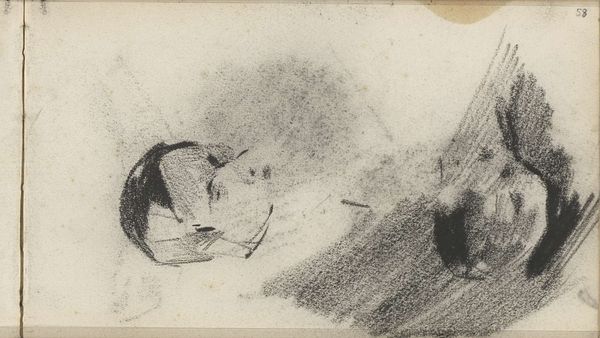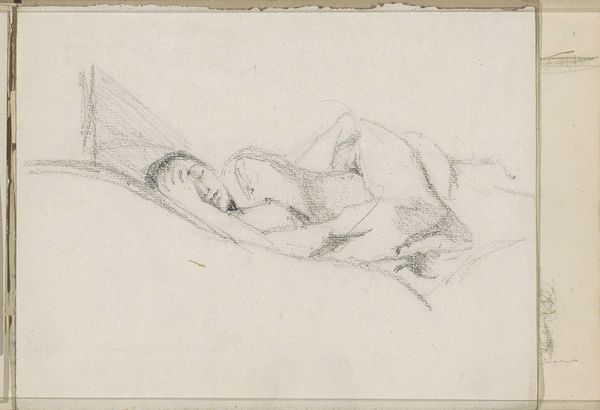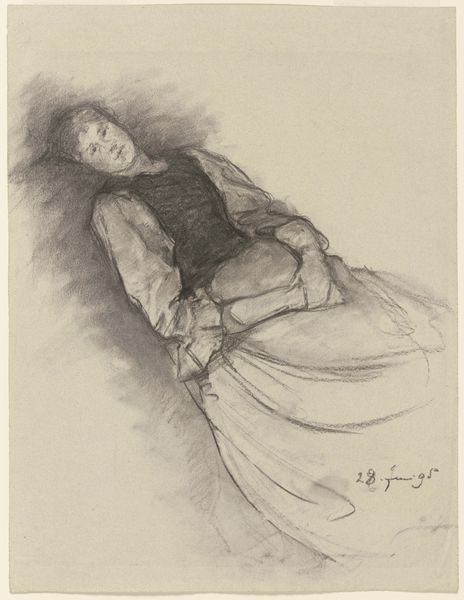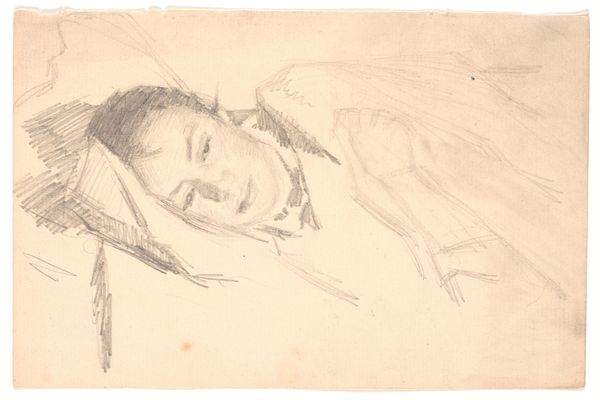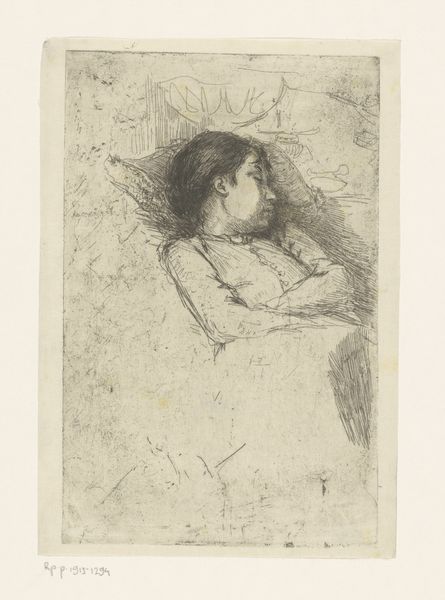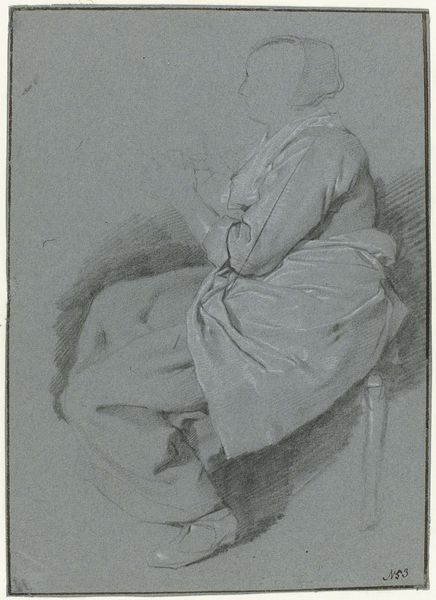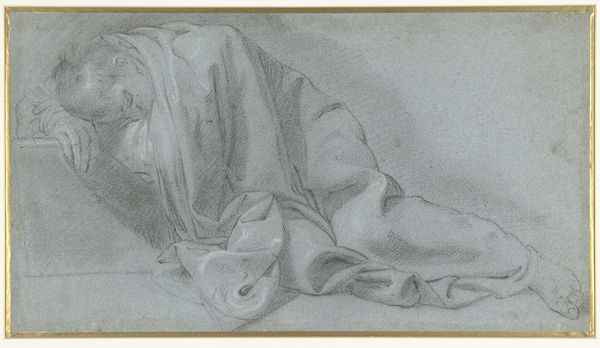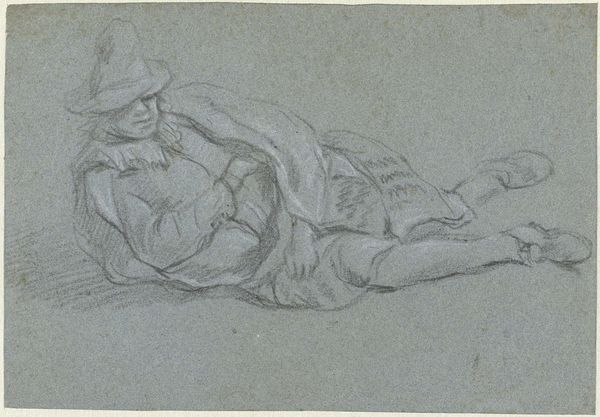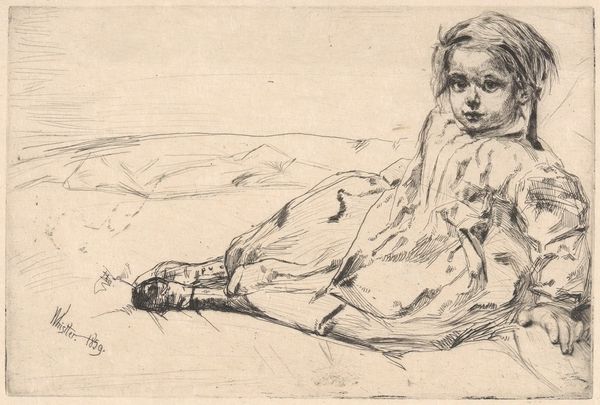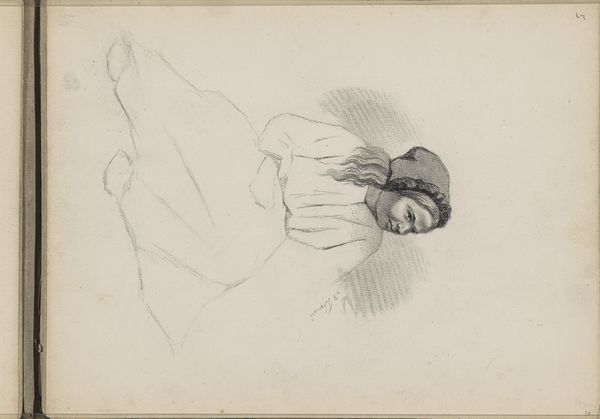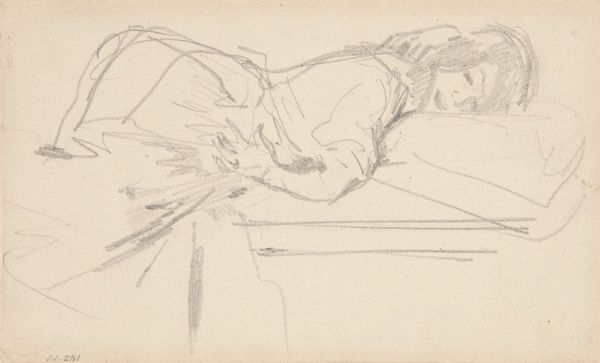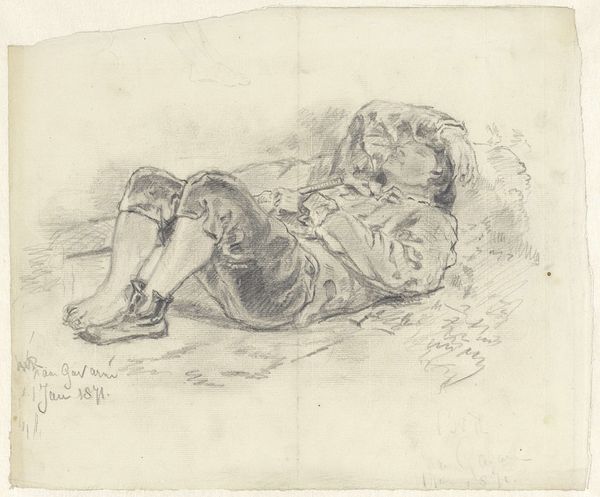
drawing, pencil
#
portrait
#
pencil drawn
#
drawing
#
charcoal drawing
#
figuration
#
pencil drawing
#
pencil
#
portrait drawing
#
realism
Dimensions: height 225 mm, width 303 mm
Copyright: Rijks Museum: Open Domain
Editor: This drawing, "Studie van een man te bed", or "Study of a Man in Bed", made sometime between 1865 and 1913, is currently at the Rijksmuseum. It's a pencil drawing of a man reclining, and there's something about his expression that makes me wonder what he’s thinking or feeling. What do you see in this piece? Curator: It’s more than just a study of a man, isn’t it? Consider the late 19th century, the era's intense debates around class, labor, and the body. Here, we have an intimate, almost vulnerable portrayal of a man at rest—or perhaps in illness? Who was he, and what socio-economic circumstances placed him in this state of repose, visible to the artist, Bramine Hubrecht? The gaze upwards can also evoke a feeling of religious iconography... perhaps he is looking up to the heavens? Editor: So, you're seeing a commentary on class and maybe even health, rather than just a simple portrait? That’s interesting because I didn’t immediately consider the social context. I was more focused on the sort of resigned mood. Curator: Precisely. We need to consider art-making and art viewing as historically contingent actions and think about these representations politically. How does seeing this man in this vulnerable position make you feel? Does it challenge your assumptions about masculinity, labour and health? These works offer space for thinking about inequalities, visibility and voice, allowing us to reflect on them in our present moment. Editor: That gives me a lot to consider! I hadn't thought about how the drawing is an intersection between an artistic rendering and also an intersectional representation. Curator: It also urges us to contemplate broader historical narratives around the representation of vulnerability and rest. What does it mean to depict a man not in action or in labor, but in a state of apparent idleness or perhaps exhaustion? It forces us to challenge the idea that the only valuable contributions of men are those linked to labor, pushing against historical social standards. Editor: Thanks. Looking at this piece, in a new light, allows us to observe the drawing’s significance by providing the viewer with more ways of engaging with both the period and art itself.
Comments
No comments
Be the first to comment and join the conversation on the ultimate creative platform.
